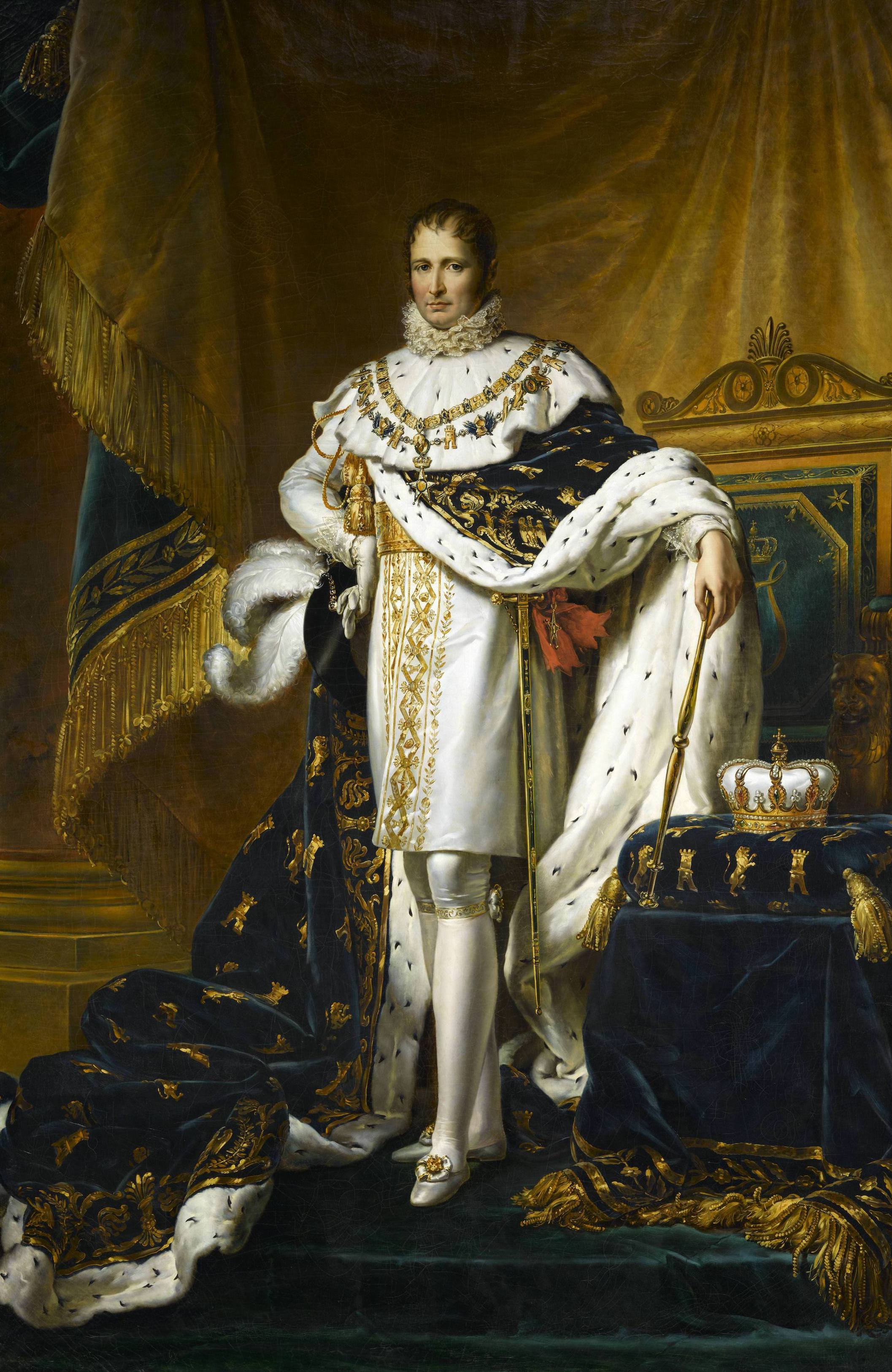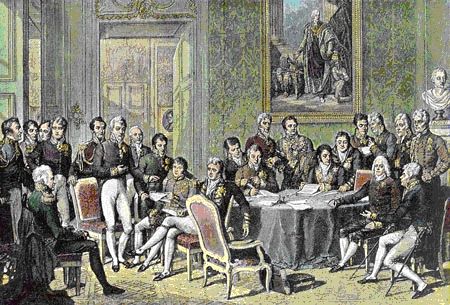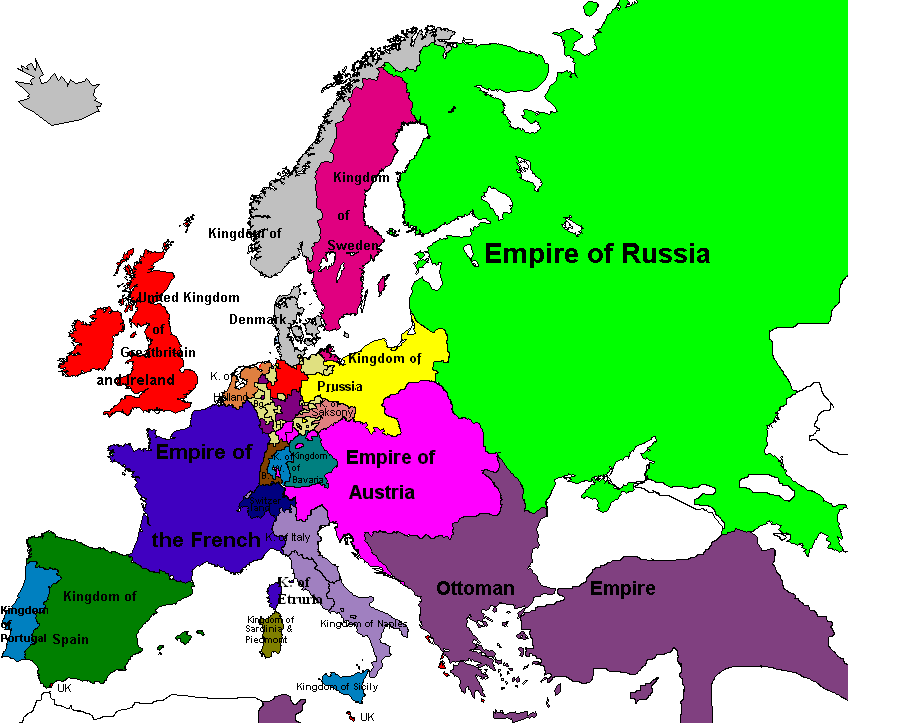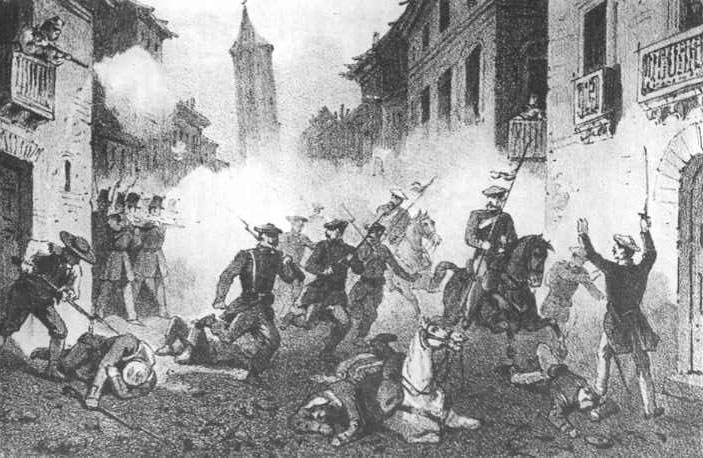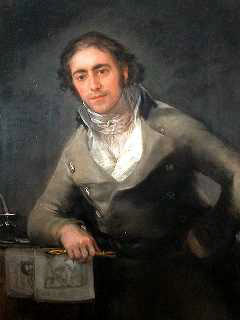maverick
Banned
The Fallen Prince
From the Memoirs of General Savary
The enemy, after driving us back on the preceding day, had taken up, on the bank of the river, a position from whence they had a complete view of our bridge in its whole extent; and contriving to fill with stones the largest boats they could find, they sent them down the current. This contrivance proved but too successful; since, of the two bridges we had constructed, the one was wholly carried away, and the other half destroyed. The scanty supply of boats and pontoniers had prevented our raising a stockade to protect the bridge, an omission which proved fatal to us. This disaster soon became known to the troops that were engaged, made them lose all hope of assistance, and the several corps withdrew in succession from the contest. It could not, in fact, be expected that, in the absence of all ammunition, they should remain in a position where certain destruction awaited them.
The Emperor commanded a retreat, and superintended it himself, by remaining exposed to a cannonade which we no longer answered. It became more and more harassing as we approached the bridge that communicated with the island of Lobau, and formed the centre of a circle, the circumference of which was occupied by the artillery. Our left and centre disputed every inch of ground in their retreat, and had not yet returned to the position between the villages of Essling and Aspern, from whence they had debouched in the morning, when the enemy made a desperate attack upon our right, and carried the village of Essling, which was defended by Boudet's division. The retreat could only be secured by our quickly regaining that position, from whence the enemy would have reached the bridge long before the arrival of Marshals Massena and Lannes to cover it. Our situation was most critical; and we were about to be thrown into complete disorder, when the Emperor directed General Mouton, his aide-de-camp, to attack immediately with the fusileer brigade belonging to the guards. It was in the middle of this chaos while the Austrians charged once more, the cannonade continuing, that the Emperor disappeared in a dark cloud.
The torch was extinguished by the fury of the wind; some four paces from the bank there was nothing to indicate the direction taken by the fugitives, the new Cæsar and his fortunes were swallowed up in the gulf of darkness, and night perhaps be sucked down into the abyss never to reappear, whilst I remained the sole witness to the catastrophe.
From “The Fifteen decisive battles of the world” by Sir. Edward Shepherd Creasy
Aspern-Essling
Following Napoleon’s failed offensive against the Austrian Center, archduke Charles had been able to exploit the weaknesses of the exhausted French army and by bringing the reserves to the fight, was able to drive the French army back and check both the Emperor and Marshall Lannes. With his repulse the impetus of the attack died out all along the line. Aspern had been lost, and the news reached Napoleon at the critical moment, thus beginning the fatal retreat that would end the life of the French emperor.
…news of the Emperor’s death did not spread through the camp until the night, when the battle was already lost, and even until the next morning, only the Emperor’s doctors and closest generals were aware of the tragedy that had struck the Imperial Army. To this day the very way in which the emperor died is a source of debate, some arguing that he died immediately on the field while others defend the theory that he died from his wounds at Lobau the next day. In any case, the emperor’s death on May 22nd would eventually prove to be a fatal blow to the French war effort, being just as demoralizing as the bloody defeat at the villages of Aspern and Essling and the retreat to the island of Lobau.
From…Rise and Fall of the French Empire
Even though Aspern-Essling had ended an Austrian victory, it was exhaustion and the untimely death of Napoleon Bonaparte that led to the defeat of the French army. It however didn’t matter to the officers accompanying Archduke Charles of Austria at the moment.
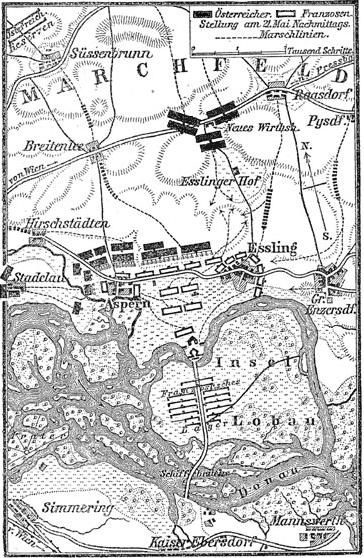
The news of Napoleon’s death gave the Austrian army, and especially its commanders, an incredible morale boost, and convinced the Austrian officers that this was the time to finish off the French army once and for all, by launching one final blow against them at Lobau, taking advantage of their exhaustion and the chaos and confusion reigning through their lines.
Archduke Charles was the first to reject such an idea, knowing that it would take some time for his own men to regroup and rest, but he was finally convinced by his officers and an assault on Lobau was ordered on May 24th of 1809.
From…the Dictionary of the Napoleonic Wars, by S. Munro
The Battle of Lobau
…it is thus worthy of note that Lobau, much as Aspern-Essling, came as great pyrrhic victories for the Austrians, and even after Marshall Lannes had repulsed the initial assault against the remains of the French army at the island, the Austrian artillery fire combined with the relentless attacks by the Archduke’s forces were more than enough to make this a battle just as bloody as the engagements at Aspern and Essling.
The attacks of the second hour would prove just as futile for both sides, the Austrians being unable to destroy the French in detail and the French being unable to either completely retreat or to stop the Austrian attacks…
By the end of the third hour the battle was over and both sides were just as exhausted as the day before…over 10,000 Austrian soldiers lied on the fields while French casualties mounted up to 18,000 men…thus the French army had been reduced to a third of the 60,000 men that had fought at the second day at Aspern and Essling. More importantly, the French were now on the retreat and completely incapable of mounting any sort of counteroffensive as they marched along the Danube back to Bavaria.
From…The Last Coalition, by William Cohen
Three weeks after the Aspern and Essling campaign and the Archduke’s army was still recovering from the bloody battles along the Danube. Charles had suffered well over 30,000 casualties in a three day’s fighting, some claiming that after seeing the devastation left over the ruins of Aspern he famously and unknowingly played the role Pyrrhus of Epirus some 2,000 years after his own campaigns, saying: “Another victory like this and we will be over”
But in the meantime, the French army under Lannes and Massena had barely made it to Bavaria, where they were greeted by the King, the first foreign monarch to formally mourn the death of Napoleon and offer a state funeral, something that both Massena and Lannes politely refused.
The other theaters of the War that would later be known as the “War of the Fifth Coalition” were also looking up for those allied to Austria.
At Saxony, the Black Brunswickers, also known as the “Black Legion” under the Duke of Brunswick-Wolftenbuttel had defeated the pro-Bonapartist forces and taken the capital at Dresden, after having pushed back the armies of Marshall Junot and later another French army under Jerome Bonaparte himself.
These victories would play a major role in the development of the German nationalism that was being born under French rule over Germany. The exploits of Archduke Charles and the Duke of Brunswick overt the French, as well as the rebellion Andreas Hofer was leading against Franco-Bavarian domination in the Tyrol would fuel the fire of German nationalism throughout the French-dominated Confederation of the Rhine, triggering anti-French risings at Wurttemberg and Westphalia.
From…a History of the British Military 1776-1854
The Walcheren campaign that had begun in 1809 as a simple attempt to relief the Austrians fighting the bulk of the French Imperial Army had become a massive campaign of national liberation once news of the death of Emperor Napoleon I had reached London.
Soon afterwards there was already talking about increasing the size of Lord Chatham’s expedition to the Netherlands from 40,000 to 50,000 and of sending even more troops to reinforce Lord Wellesley’s precarious position in Spain.
John Pitt’s forces would remain at 40,000, the largest army Britain had committed to the war thus far, even larger than the force fighting at the time in the Peninsular war, but would be further reinforced with materiel and the Royal Navy, and was in little time able to seize a considerable portion of the Kingdom of Holland, more than enough to force its king Louis Bonaparte, to flee with his family to safety in France.
With Napoleon dead, the ring of client states he had set up for himself and his family took little time to crumble, and just a few weeks after Louis abandoned Holland, Jerome would do the same with Westphalia, leaving it to the armies of the Fifth Coalition on the summer of 1809 and Joseph as the only Bonaparte still on the throne.
From the Memoirs of General Savary
The enemy, after driving us back on the preceding day, had taken up, on the bank of the river, a position from whence they had a complete view of our bridge in its whole extent; and contriving to fill with stones the largest boats they could find, they sent them down the current. This contrivance proved but too successful; since, of the two bridges we had constructed, the one was wholly carried away, and the other half destroyed. The scanty supply of boats and pontoniers had prevented our raising a stockade to protect the bridge, an omission which proved fatal to us. This disaster soon became known to the troops that were engaged, made them lose all hope of assistance, and the several corps withdrew in succession from the contest. It could not, in fact, be expected that, in the absence of all ammunition, they should remain in a position where certain destruction awaited them.
The Emperor commanded a retreat, and superintended it himself, by remaining exposed to a cannonade which we no longer answered. It became more and more harassing as we approached the bridge that communicated with the island of Lobau, and formed the centre of a circle, the circumference of which was occupied by the artillery. Our left and centre disputed every inch of ground in their retreat, and had not yet returned to the position between the villages of Essling and Aspern, from whence they had debouched in the morning, when the enemy made a desperate attack upon our right, and carried the village of Essling, which was defended by Boudet's division. The retreat could only be secured by our quickly regaining that position, from whence the enemy would have reached the bridge long before the arrival of Marshals Massena and Lannes to cover it. Our situation was most critical; and we were about to be thrown into complete disorder, when the Emperor directed General Mouton, his aide-de-camp, to attack immediately with the fusileer brigade belonging to the guards. It was in the middle of this chaos while the Austrians charged once more, the cannonade continuing, that the Emperor disappeared in a dark cloud.
The torch was extinguished by the fury of the wind; some four paces from the bank there was nothing to indicate the direction taken by the fugitives, the new Cæsar and his fortunes were swallowed up in the gulf of darkness, and night perhaps be sucked down into the abyss never to reappear, whilst I remained the sole witness to the catastrophe.
From “The Fifteen decisive battles of the world” by Sir. Edward Shepherd Creasy
Aspern-Essling
Following Napoleon’s failed offensive against the Austrian Center, archduke Charles had been able to exploit the weaknesses of the exhausted French army and by bringing the reserves to the fight, was able to drive the French army back and check both the Emperor and Marshall Lannes. With his repulse the impetus of the attack died out all along the line. Aspern had been lost, and the news reached Napoleon at the critical moment, thus beginning the fatal retreat that would end the life of the French emperor.
…news of the Emperor’s death did not spread through the camp until the night, when the battle was already lost, and even until the next morning, only the Emperor’s doctors and closest generals were aware of the tragedy that had struck the Imperial Army. To this day the very way in which the emperor died is a source of debate, some arguing that he died immediately on the field while others defend the theory that he died from his wounds at Lobau the next day. In any case, the emperor’s death on May 22nd would eventually prove to be a fatal blow to the French war effort, being just as demoralizing as the bloody defeat at the villages of Aspern and Essling and the retreat to the island of Lobau.
From…Rise and Fall of the French Empire
Even though Aspern-Essling had ended an Austrian victory, it was exhaustion and the untimely death of Napoleon Bonaparte that led to the defeat of the French army. It however didn’t matter to the officers accompanying Archduke Charles of Austria at the moment.

The news of Napoleon’s death gave the Austrian army, and especially its commanders, an incredible morale boost, and convinced the Austrian officers that this was the time to finish off the French army once and for all, by launching one final blow against them at Lobau, taking advantage of their exhaustion and the chaos and confusion reigning through their lines.
Archduke Charles was the first to reject such an idea, knowing that it would take some time for his own men to regroup and rest, but he was finally convinced by his officers and an assault on Lobau was ordered on May 24th of 1809.
From…the Dictionary of the Napoleonic Wars, by S. Munro
The Battle of Lobau
…it is thus worthy of note that Lobau, much as Aspern-Essling, came as great pyrrhic victories for the Austrians, and even after Marshall Lannes had repulsed the initial assault against the remains of the French army at the island, the Austrian artillery fire combined with the relentless attacks by the Archduke’s forces were more than enough to make this a battle just as bloody as the engagements at Aspern and Essling.
The attacks of the second hour would prove just as futile for both sides, the Austrians being unable to destroy the French in detail and the French being unable to either completely retreat or to stop the Austrian attacks…
By the end of the third hour the battle was over and both sides were just as exhausted as the day before…over 10,000 Austrian soldiers lied on the fields while French casualties mounted up to 18,000 men…thus the French army had been reduced to a third of the 60,000 men that had fought at the second day at Aspern and Essling. More importantly, the French were now on the retreat and completely incapable of mounting any sort of counteroffensive as they marched along the Danube back to Bavaria.
From…The Last Coalition, by William Cohen
Three weeks after the Aspern and Essling campaign and the Archduke’s army was still recovering from the bloody battles along the Danube. Charles had suffered well over 30,000 casualties in a three day’s fighting, some claiming that after seeing the devastation left over the ruins of Aspern he famously and unknowingly played the role Pyrrhus of Epirus some 2,000 years after his own campaigns, saying: “Another victory like this and we will be over”
But in the meantime, the French army under Lannes and Massena had barely made it to Bavaria, where they were greeted by the King, the first foreign monarch to formally mourn the death of Napoleon and offer a state funeral, something that both Massena and Lannes politely refused.
The other theaters of the War that would later be known as the “War of the Fifth Coalition” were also looking up for those allied to Austria.
At Saxony, the Black Brunswickers, also known as the “Black Legion” under the Duke of Brunswick-Wolftenbuttel had defeated the pro-Bonapartist forces and taken the capital at Dresden, after having pushed back the armies of Marshall Junot and later another French army under Jerome Bonaparte himself.
These victories would play a major role in the development of the German nationalism that was being born under French rule over Germany. The exploits of Archduke Charles and the Duke of Brunswick overt the French, as well as the rebellion Andreas Hofer was leading against Franco-Bavarian domination in the Tyrol would fuel the fire of German nationalism throughout the French-dominated Confederation of the Rhine, triggering anti-French risings at Wurttemberg and Westphalia.
From…a History of the British Military 1776-1854
The Walcheren campaign that had begun in 1809 as a simple attempt to relief the Austrians fighting the bulk of the French Imperial Army had become a massive campaign of national liberation once news of the death of Emperor Napoleon I had reached London.
Soon afterwards there was already talking about increasing the size of Lord Chatham’s expedition to the Netherlands from 40,000 to 50,000 and of sending even more troops to reinforce Lord Wellesley’s precarious position in Spain.
John Pitt’s forces would remain at 40,000, the largest army Britain had committed to the war thus far, even larger than the force fighting at the time in the Peninsular war, but would be further reinforced with materiel and the Royal Navy, and was in little time able to seize a considerable portion of the Kingdom of Holland, more than enough to force its king Louis Bonaparte, to flee with his family to safety in France.
With Napoleon dead, the ring of client states he had set up for himself and his family took little time to crumble, and just a few weeks after Louis abandoned Holland, Jerome would do the same with Westphalia, leaving it to the armies of the Fifth Coalition on the summer of 1809 and Joseph as the only Bonaparte still on the throne.
